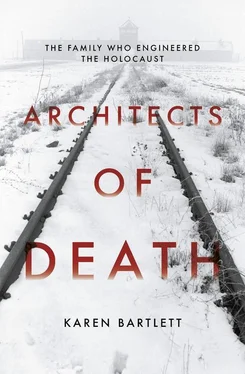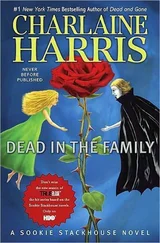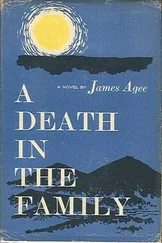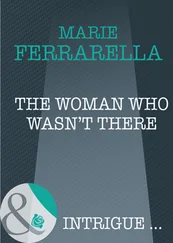The J. A. Topf company of Wiesbaden continued to limp along in its final incarnation until 1961, when a groundbreaking West German TV documentary series Drittes Reich highlighted that ‘the company that supplied the cremation ovens used in the concentration camps’ was now headquartered in Mainz. A few months later, a book by Robert Neumann called Hitler: Aufstieg und Untergang des Dritten Reiches brought even more unwelcome attention from the foreign press after publishing a copy of the Topf and Sons patent for the ‘continuous operation corpse incineration oven for mass use’ and a copy of correspondence with the SS at Auschwitz about the ventilation systems for the gas chambers.
Topf had escaped another police investigation in January 1960 in connection with ‘gassing ovens at concentration camps’, by offering up his usual justification that ‘anything burned in these ovens was already dead’, but as a result of the new television series and book, Ernst Wolfgang found himself referred back to investigators from the Central Land Judicial Administration Office for the Investigation of National Socialist Crimes who passed the case to a special unit preparing for trials in relation to Auschwitz.
Despite the many efforts to bring Topf to justice, he never faced any further prosecution for the actions of Topf and Sons during the Holocaust. The immediate consequence of the new media revelations was that J. A. Topf and Sons was finally deregistered. J. A. Topf and Sons was dissolved on 18 March 1963 and the last Topf brother was out of business for ever. Ernst Wolfgang’s wife Erika died a month later on 23 April.
Despite living on in a state of some dereliction, Ernst Wolfgang survived for another sixteen years – dying on 23 February 1979 in the northern German town of Brilon. He was seventy-four years old, an age many of his victims never reached. He had defiantly evaded justice to the very end.
When Hartmut Topf was sixteen, he borrowed five marks from his young teacher Heinz Bunese and caught a bus from his home in Falkensee in the Soviet zone to West Berlin. In the autumn of 1950, eleven years before the Berlin Wall was built, it was still possible for workers with the right papers to cross the city, but Hartmut did not have the right papers and it was a nerve-racking journey; he knew that he would be arrested if caught. The new East German communist police and customs officers were often on the commuter buses, on the lookout for the wrong people, but they couldn’t apprehend every passenger. And, much to Hartmut’s relief, he made it. I went to Spandau. I didn’t know where to go, so I asked the first policeman
I saw and he told me that there were places that welcomed refugees. I went to one of the places he mentioned, got registered, answered some questions, had a medical test and after a few weeks I was accepted as a political refugee – and then I was sent to West Germany. [147] Author interview with Hartmut Topf.
As a teenager, Hartmut had been involved in small acts of rebellion against Soviet rule, refusing to sign a telegram for Stalin’s birthday, and smuggling in airmail copies of West Berlin newspapers to secretly distribute in school text books. But eventually he had been exposed, and his choice was to flee or be sent to prison. Now that he had made it to the West he was free to build a new life for himself, but in many ways he was still a young boy away from his family for the first time.
While his mother understandably missed him, his sister Karin remembers being pleased about inheriting Hartmut’s bicycle. ‘I didn’t really notice his absence. Perhaps it was even a relief, because I was also a bit difficult. I had my own ideas, and my own ways.’
Not only was Hartmut leaving his family behind, but also his home town. With refugees flooding into West Berlin from the Soviet zone, housing was horrendously overcrowded and priority was given to families with children. There was no place in Berlin for a sixteen-year-old with few skills, and Hartmut was sent to Hanover where he boarded with other young men. Eventually he managed to secure an apprenticeship with his father’s old company, Siemens, and began a career as a telecoms engineer.
Life in the West was about far more than work, however. Although Hartmut completed his three-year apprenticeship, living in Hanover opened his eyes to theatre and music, and he began to envision a different future for himself:
I met very interesting people in Hanover. I met lots of people involved in theatre and I sang in a choir. I went to the theatre almost every evening. I cut a strange figure wearing my leather shorts and carrying a ceremonial knife while I wandered around in the theatre canteen after the show with the actors… I even celebrated my twenty-first birthday on a concert tour of the Matthäus-Passion by Johann Sebastian Bach. We performed in Belgium and in Aachen. It was another world. That would have never happened in Falkensee.
Even so, Hartmut longed to return to West Berlin, and eventually managed to do this, working a string of day jobs while indulging his passion for the theatre in his spare time. At work, Hartmut was often preoccupied, thinking about the theatre, and the day jobs seemed to inevitably end with his dismissal. As the years passed, Hartmut married and divorced his wife, becoming a single father to their son, Till. Eventually he vowed never to take another full-time job that he woke up dreading, and embarked upon a freelance radio, journalism and theatre career that sustained him for the rest of his life.
In 1956 there was a Soviet military intervention in Hungary, and the army crushed the revolt. My friends, who were actors and artists, were desperate and cried. They were all so involved. I said I have to be closer to the action – and I decided to go to Berlin. I hoped I would also get the chance to go to a theatre school there, but I wasn’t accepted to any. Then I got a job in a small Christian theatre: the Vaganten. The director, Horst Behrend, had four children and was very conservative. He was a bit of a dictator in his theatre, but very devoted to it. He was a Christian and secretly he was a homosexual. He allowed me to work there as an assistant and I learned a lot. It was the best theatre experience I ever had; we put on beautiful plays and I was respected. Later I organised big theatre events, and I also helped organise the filming of Katz und Maus by Günter Grass in Poland in the ’60s.
In the 1960s, Hartmut also began working in puppet theatre – something he had been drawn to since his experiences with his childhood friend Hans Laessig decades earlier:
I like to call it an infection. Puppetry was contagious in my early years. Then I rediscovered it after meeting a puppeteer called Steinmann in Berlin… and I assisted him on the technical side of things in his little theatre, like the sound engineering and the light equipment. I stayed backstage and did all that, and through that I met many, many puppeteers, and I wrote critiques about puppetry festivals. I joined UNIMA, the reformed Union Internationale de la Marionette that was founded in Prague in ’29 by a puppeteer’s friends. I became a notorious festival-goer and the nickname I earned is pretty accurate – I am a puppet diplomat. I connect and I bring people together.
Puppetry, theatre and politics were becoming intertwined in Hartmut’s world, especially in Berlin where everyone was either a dissident or refugee, or an American agent or Stasi spy. His puppet theatre work took him across the border into Poland and Czechoslovakia, and ultimately back to East Berlin, where he reconnected with his family and learned what little he could about the history of Topf and Sons.
Читать дальше












